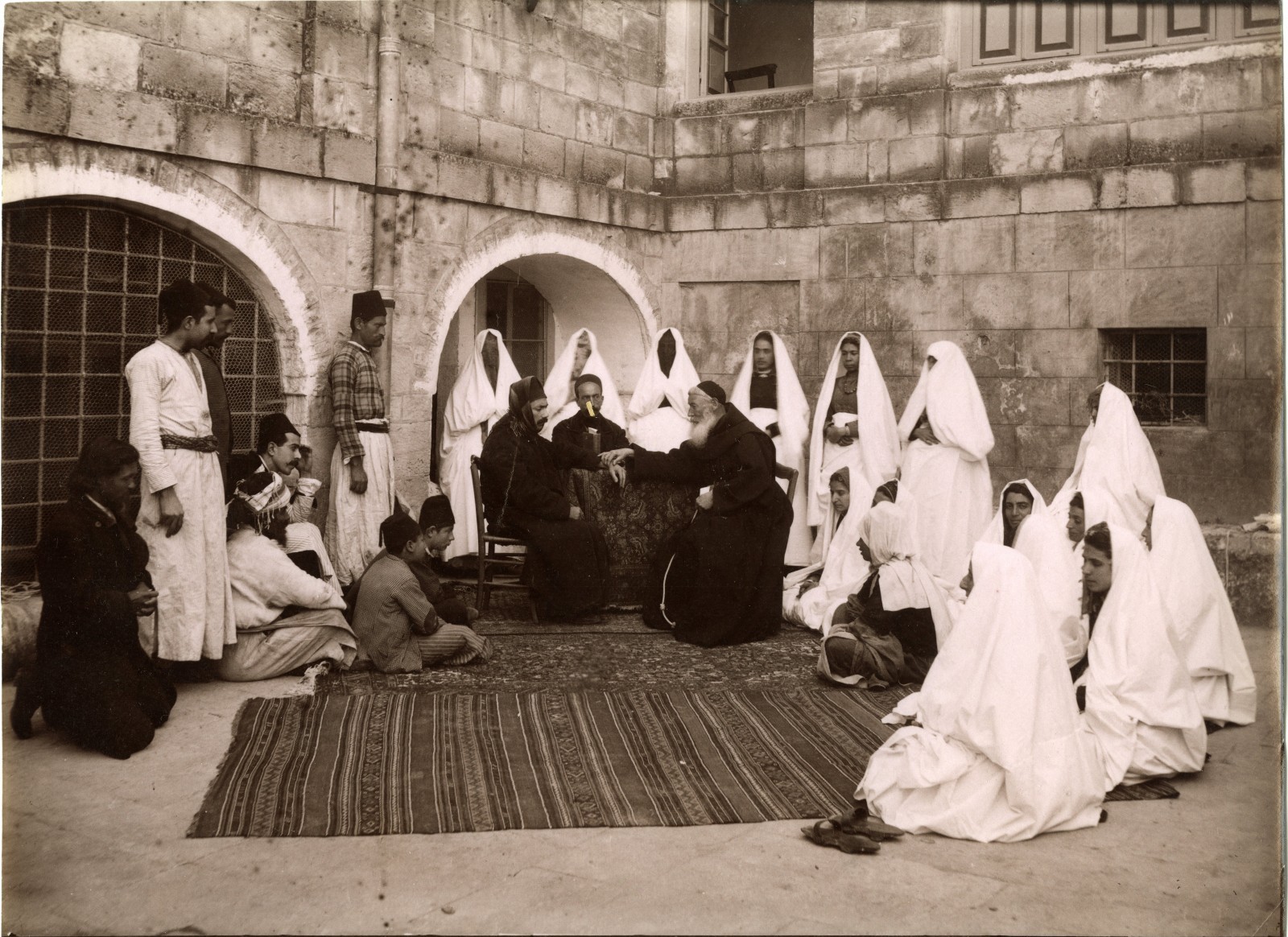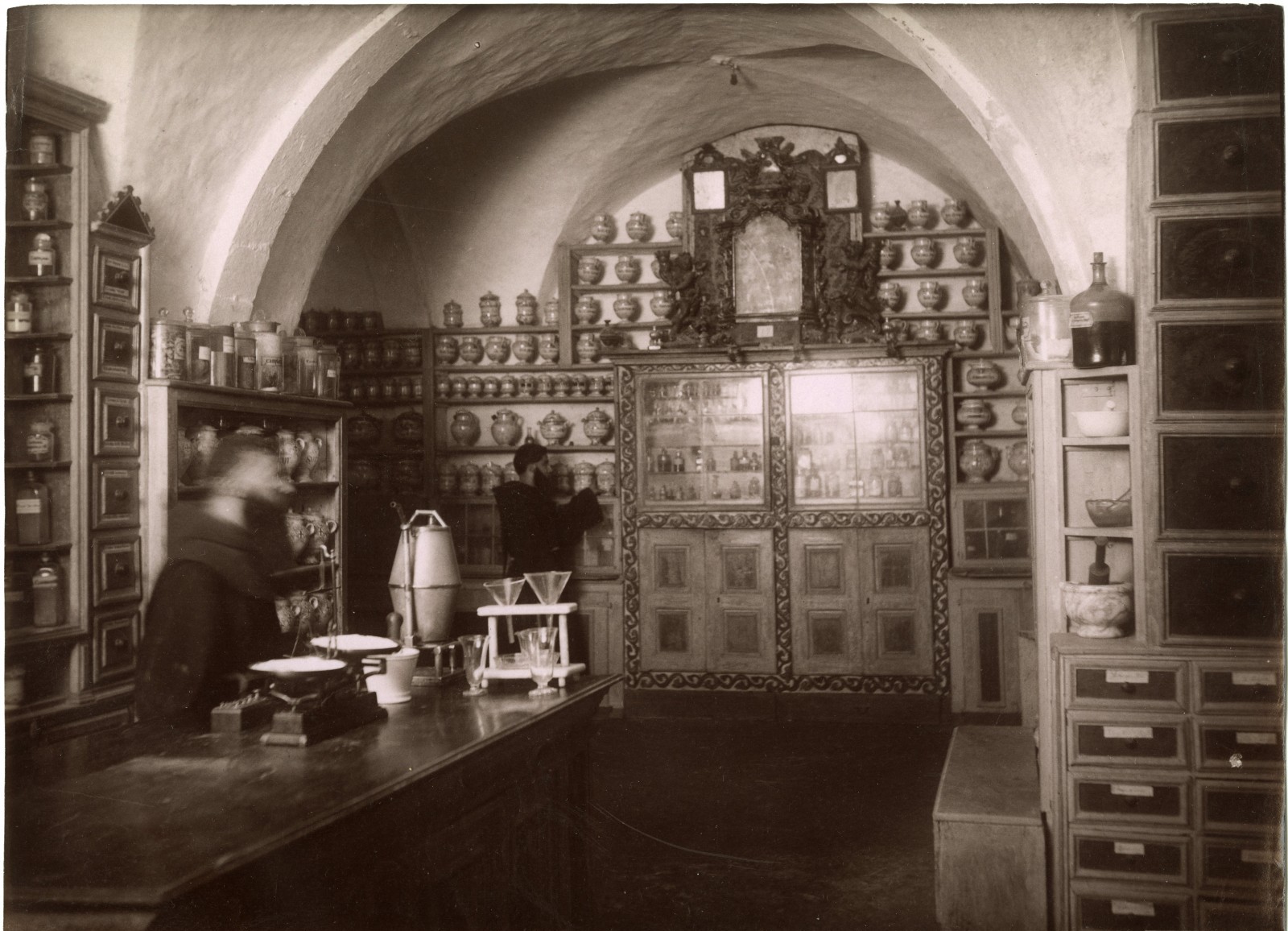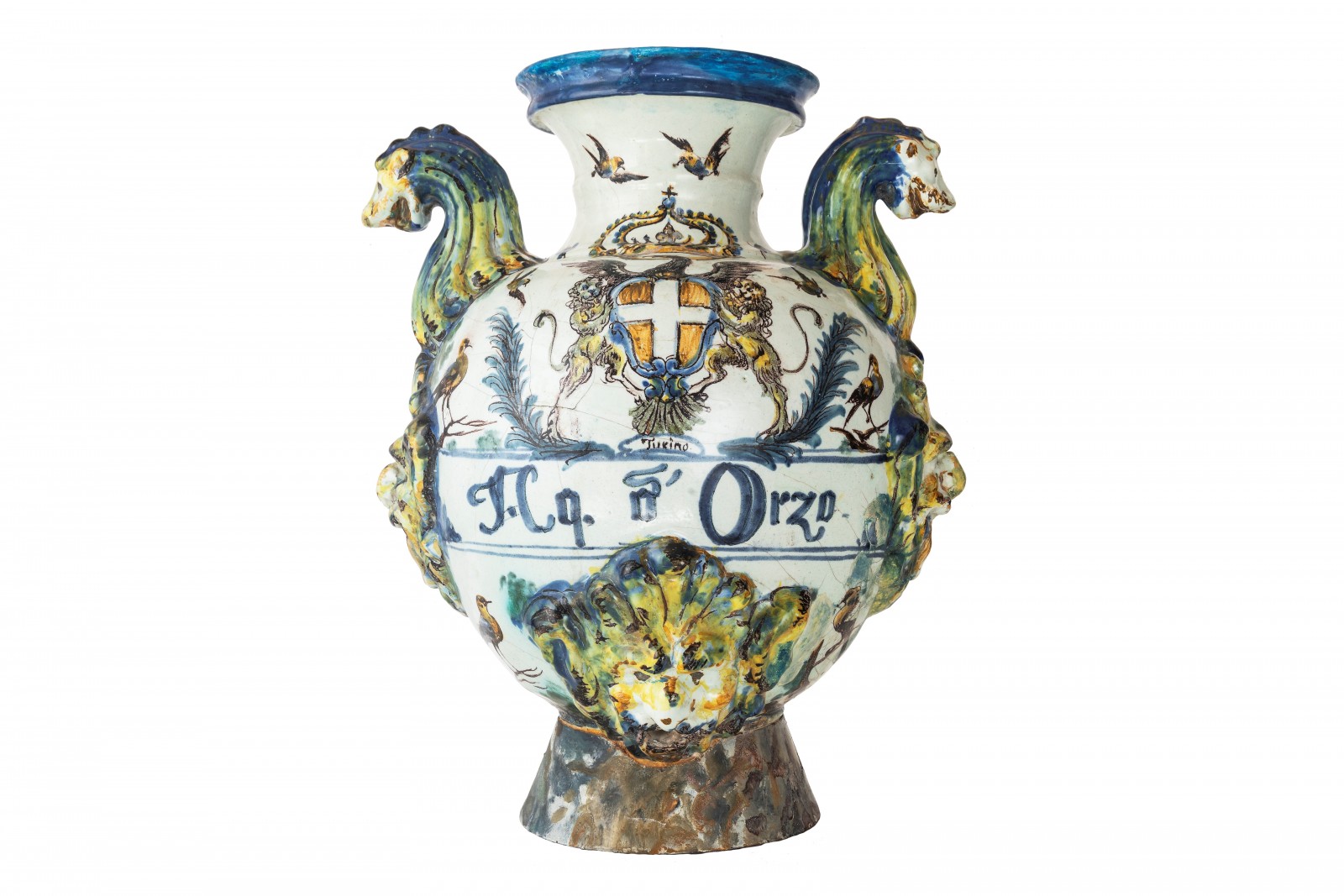Brief history of the ancient pharmacy of Saint Saviour in Jerusalem
And since there is no other pharmacy in Jerusalem, both our lay Catholics and also other nations…hasten to us when in danger of bodily health…Yet the piety and custom of the Friars apply the same charity to them as to those of the household of the faith, and they give free medicines to be used for any disease.
(Fr. Elzear Horn OFM, Iconographiae Monumentorum Terrae Sanctae, 1724 – 1744)
There was no religious distinction when it came to treating a sick person. Father Elzear Horn, a Franciscan who lived in the Holy Land during the 18th century, speaks of how the friars cared for everyone, whether they were Catholics, Greeks, Armenians or other religions. Similarly, thanks to Pope Calixte III’s 1455 papal bull Etsi ex debito, the friars could also employ Jewish or “schismatic” doctors if necessary, as when, for example, it was impossible to import the ingredients necessary for drug production. Father Horn himself tells us that on August 8, 1727, he received a visit from a Jewish doctor who had studied in Bologna.

[IT]Gerusalemme, convento di San Salvatore. Consultazione medico-chirurgiche di inizio Novecento. ©ASCTS [/IT][EN]Jerusalem, convent of St. Savior. Medical-surgical consultation at the beginning of the twentieth century. ©ASCTS [/EN][ES]Jerusalén, convento de San Salvador. Consulta médico-quirúrgica a principios del siglo XX. ©ASCTS [/ES][FR]Jérusalem, couvent de Saint Sauveur. Consultation médico-chirurgicale au début du XXe siècle. ©ASCTS[/FR]
It was in the pharmacy of the Saint Saviour Monastery, opened in the 14th century, that the friars kept the medicines sent to the Holy Land by European benefactors. Father Horn gives us a very detailed list, of which we will transcribe only part: “For those who enter it can see and inspect on all sides minerals kept in wooden boxes and chests, fruits, bones, confections, pulls, plasters wrapped in a waxed vesicle or paper, salts, vapours, resin, fats, marrows and ointments kept in glass jars, vinegar, distilled water, wines and syrups, and other juices and spirit extracts…”
The pharmacy extended into the southern part of the monastery, in the area now occupied by the Saint Saviour laundry. Near the pharmacy, there was a garden where the friars grew medicinal herbs. Not far away, there was a library with medical manuals, old books and manuscripts useful for the preparation of medicines. Between 1710 and 1720, a second floor was added, and in 1750, all the wooden shelves with terracotta vases for the storage of medicines were left on the ground floor.

[IT]Gerusalemme, convento di San Salvatore. Farmacia di Terra Santa, primi anni del Novecento ©ASCTS.[/IT][FR]Jérusalem, couvent de Saint Sauveur. Pharmacie de Terre Sainte, début du 20ème siècle. ©ASCTS[/FR][ES]Jerusalén, convento de San Salvador. Farmacia de Tierra Santa, principios del siglo XX. ©ASCTS[/ES][EN]Jerusalem, convent of St. Savior. Pharmacy of the Holy Land, early 20th century. ©ASCTS[/EN]
Among the medicines, the “Balm of Jerusalem,” invented by Father Antonio Menzani who was chief pharmacist for 43 years, arrived in Saint Saviour in 1686 and quickly became famous. This ointment, perfected over 24 years, was known to treat a variety of diseases and symptoms, from wounds to stomach aches, and even to prevent the plague. The origin of the balm is not known, most likely due to the general ineffectiveness of previous versions. But we do know some of the ingredients. Indeed, after the recipe was developed, Father Antonio made his discovery known in Milan in 1719 by listing the forty different elements that make up the ointment, including four different types of roots, carline, gentian, incense, myrrh, rose leaves, cedar, violet and other ingredients still unknown to modern pharmacists.
Father Antonio was an example to believers and non-believers alike and spent his life working and making contributions to the medical field. He made the Jerusalem pharmacy the most avant-garde in the Middle East and helped treat many people, including the Ottoman Sultan who, as a way of thanking him, gave him access to all Muslim holy places.
Father Antonio died in 1729, but the pharmacy continued to operate until the First World War. It was then closed due to the increasing difficulty of finding raw materials in Europe and the opening of other pharmacies in the city.
The Franciscans still preserve numerous testimonies of this place of research, community and caring for the sick: apothecary vases, coming primarily from the republics of Venice and Genoa as well as the Duchy of Savoy, precious finely-decorated containers dating back to the 17th and 18th centuries and manuscripts (recipe books, inventories of spices, herbs and tools, etc.) which are currently located in the historical archive of the Custody.

[IT]Vaso apotecario proveniente da Torino, Italia. XVIII secolo [/IT][FR]Pot à pharmacie de Turin, Italie. XVIIIe siècle [/FR][ES]Tarro de farmacia de Turín, Italia. siglo XVIII [/ES][EN]Pharmacy jar from Turin, Italy. XVIII century[/EN]
The old pharmacy will be revived in one of the rooms of the future Historical Section of the Terra Sancta Museum. According to the museographer Jérôme Dumoux and the architect Vincenzo Zuppardo, the recreated pharmacy will enable the visitor to go back in time. There, you can observe pharmaceutical instruments close up, touch the apothecary jars and smell the spices and aromas that were skillfully mixed to create powerful balms and ointments that cared for the inhabitants of Jerusalem.



